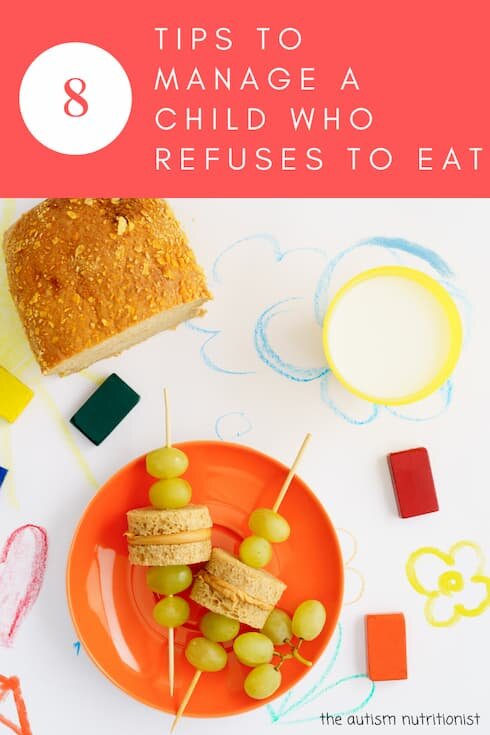
Few things are as frustrating as making a meal that your child refuses to eat. (To be clear, I’m not talking about chronic refusal or inability to eat, but the occasions that happen every so often.)
You’re doing everything right. You know they need to eat, but the question is how can you help them? And is it really your role to ensure they eat at every single meal any way?
The answer is yes and no. You should always give them a fair opportunity to eat. You should always make sure that meals and mealtimes are comfortable and appropriate for your child. But sometimes a child might still refuse. It’s not your job to force them, but there are still ways that you can help your child eat better and increase the likelihood that they will eat at their next meal.
8 Solutions for When Your Child Doesn’t Eat
Don’t make it a big deal
When your child doesn’t eat or doesn’t eat well for a single meal and it’s not an ongoing pattern, try not to worry and don’t make it a big deal. They just might not be feeling it at that time! Our appetites are always shifting, so it makes sense that a child’s intake may not be consistent every day or every single meal.
Zoom out
Instead of focusing on the quality of every single meal and snack, shift your focus to your child’s intake over the course of a week. Taking a step back can make hiccups in their eating patterns seem less alarming.
Resist offering a backup meal
Your job as a parent or caregiver is to provide an appropriate meal for your child. This means a meal that they can and usually do eat. If your child chooses to not eat and you have done your job of providing appropriate foods and a comfortable eating environment, avoid offering backup foods, especially if they are highly preferred foods. Offering a special meal in place of the one they rejected can reinforce their behavior and increase the likelihood of it repeating.
Instead, offer nutritious options at the next meal or snack
Your child didn’t eat breakfast and you’re worried they’re going to meltdown before lunch time. Offer a nutritious snack around 1.5 to 2 hours later that contains at least one preferred food.
Check for discomfort
When you notice a decrease in your child’s eating habits, check to see if something could be bothering them at mealtimes. Is their chair comfortable? Is the environment conducive to eating? When was the last time they had a bowel movement? Oftentimes, these sorts of discomforts can create big barriers to eating. Clear these up, getting a medical professional involved as needed, before expecting to see changes in your child’s intake.
Avoid all day grazing
You’re worried that your child isn’t eating enough. So it makes sense to pile on the snacks, right? To let them eat whenever they say they’re hungry? When kids eat all day long they are less likely to eat at mealtimes. Moreover, they tend to eat just enough to shut off their hunger signals, but not enough to actually sustain them for any significant period of time. Essentially, you’re just prolonging the cycle. Instead, try to stick to standard meal and snack times.
Make sure you’re offering a preferred food
My golden rule is to always have a preferred food at every meal. This allows your child to come to the table feeling safe and knowing that they won’t leave hungry.
Make sure that any new foods are not interfering with their ability to eat
My second golden rule is to offer one new food at most meals. How you offer the food can make or break your child’s mealtime, however. Make sure that the portion size isn’t overwhelmingly large. Check also to see that the food isn’t interfering with your child’s ability to eat comfortably. If the novel food is too close to their plate or personal space, you can move it back.
Recap
Ensure you are setting your child up for success when it comes to mealtimes. Make sure they are comfortable and confirm that you are serving appropriate food choices in appropriate portion sizes and at appropriate times. Beyond that, try not to worry about the occasional skipped meal.



0 Comments